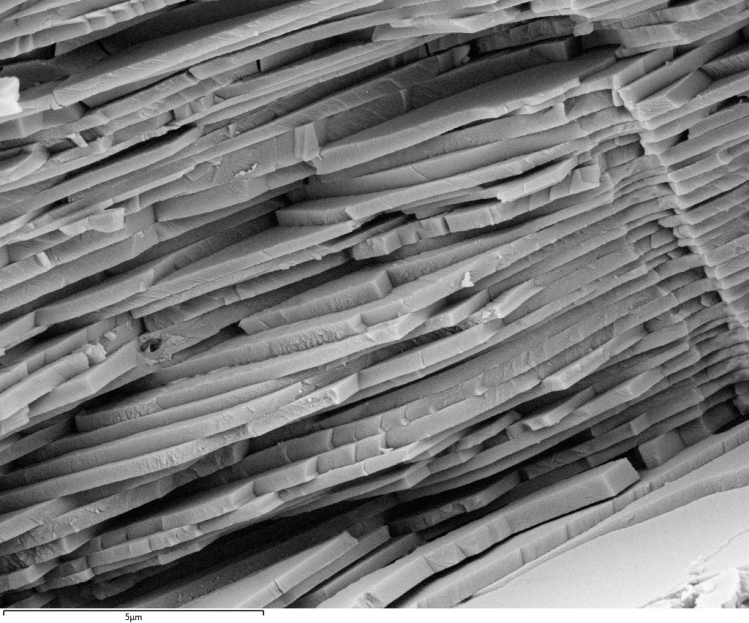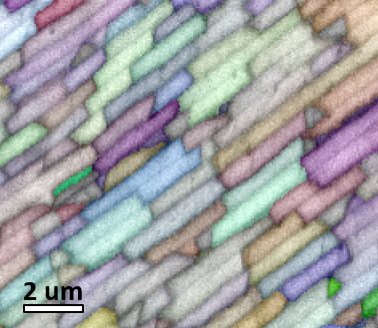Detailed EBSD Study of a Bivalve Shell
An in-depth look at the structures of a mussel shell, characterised using Symmetry. Both calcite and nanostructured aragonite nacre are measured with an unprecedented level of detail and speed.
Nature, through millions of years of evolution, has perfected the manufacture of exceptionally strong materials using relatively weak building blocks. The shells of marine bivalves such as clams and mussels are good examples of this: they are made of relatively weak calcium carbonate, yet the individual crystals are arranged in such a way that the resulting shell is incredibly strong, despite being relatively thin.
Materials scientists are trying to learn from nature and to develop synthetic materials that mimic the structure of nature. However, to do this effectively it is necessary to be able to characterise the relevant natural materials and to understand the reasons behind their superior strength. Electron backscatter diffraction (EBSD) is an ideal technique for this, and the recent development of CMOS-based EBSD detectors by Oxford Instruments has provided the necessary speed and sensitivity to make biomaterial characterisation a routine process.


What can materials scientists learn from sea shells?
The calcium carbonate (CaCO3) in sea shells comes in two forms – aragonite and calcite. Chemically indistinguishable, these forms have different crystal structures and both are commonly found in shell structures. Both minerals are relatively weak, yet nature has significantly increased the material strength by arranging sub-micrometre thick plates of aragonite into a layered structure – nacre. By reproducing this arrangement with synthetic materials, material scientists can then produce a class of super-strong materials that would have a significant impact in high-stress environments. However, in order to learn from nature it is essential to be able to characterise the detailed structure of nacre.
How has Oxford Instruments developed EBSD systems to help in biomaterial analysis?
Minerals such as calcite and aragonite are sensitive to the electron beam, yet produce relatively weak diffraction patterns. In order to be able to characterise nacre structures effectively, a fast but extremely sensitive EBSD detector is required. The innovative incorporation of CMOS technology into the Oxford Instruments EBSD detector range allows the collection of good quality diffraction patterns in millisecond timeframes using low beam energies and currents. The nacre layers can therefore be characterised with nanoscale resolution in a matter of minutes, something not possible with conventional CCD-based EBSD technology.
How are researchers putting this into practice?
Using high resolution orientation maps of aragonite nacre, researchers are now able to understand the intricate crystallographic arrangement of the aragonite plates that delivers the extreme strength. With this understanding it is possible to try to replicate such structures using synthetic materials: scientists are experimenting with a wide range of crystalline materials, including Al2O3 and CaHPO4, creating artificial nacre that has exceptional strength and toughness. These materials have many applications in the biomedical and aerospace sectors.
Back to Bio Imaging & Life ScienceAn in-depth look at the structures of a mussel shell, characterised using Symmetry. Both calcite and nanostructured aragonite nacre are measured with an unprecedented level of detail and speed.